Step 7: Soldering Connections (2014)
This step explains how to solder the wires of your sewn wristband circuit to the various parts, including the metal snaps, LED module and the ArduIMU.
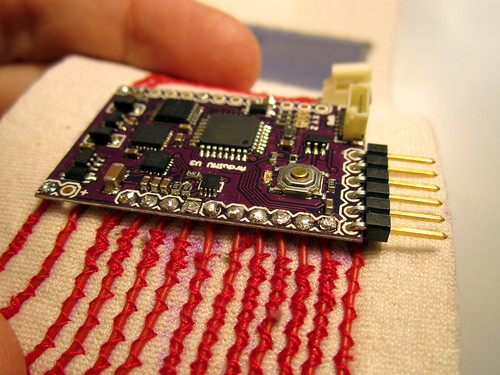
Soldering to Snaps
Trimming and stripping wire:

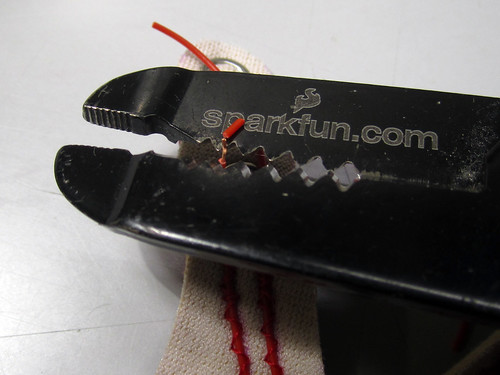


Right hand:


Video: Soldering to snaps
Solderieng Wire to RGB Module
This photos show how the RGB module of the left hand needs to be connected. CAREFUL: The RGB module of the right hand needs to be connected the other way around. Make sure that you are always connecting it as follows:
RGB LED Module — ArduIMU
+ — +
GND (-) — GND (-)
C — SCL
D — SDA
Trimming and stripping wire:
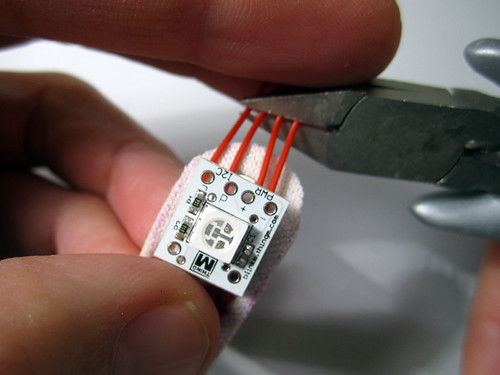
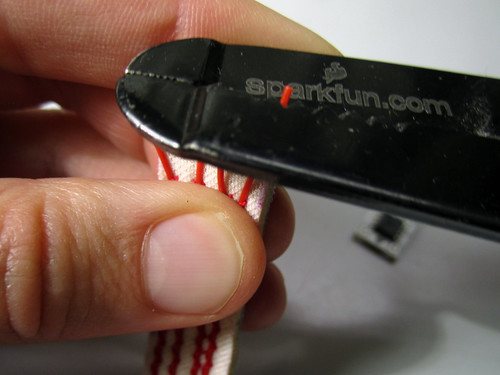



Right hand:
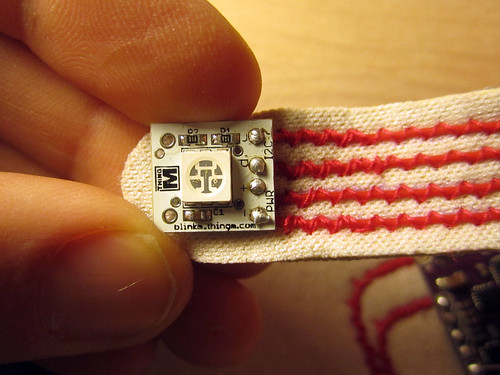
Soldering to JST Socket
Trimming and stripping wire:

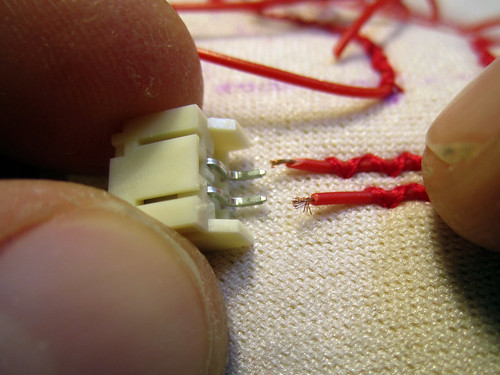
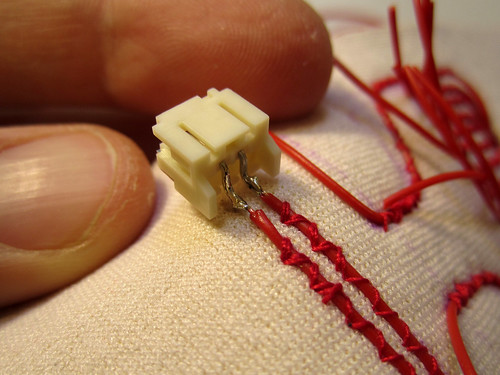
Soldering Headers to ArduIMU
Before you solder the ArduIMU to the wire circuit you have sewn on the neoprene wrist band you need to solder a connector to the FTDI pins of the ArduIMU!
These are the pins that you will then use to connect the wired or wireless (Bluetooth) connection.
Soldering Wire to ArduIMU
Front and back of ArduIMU:
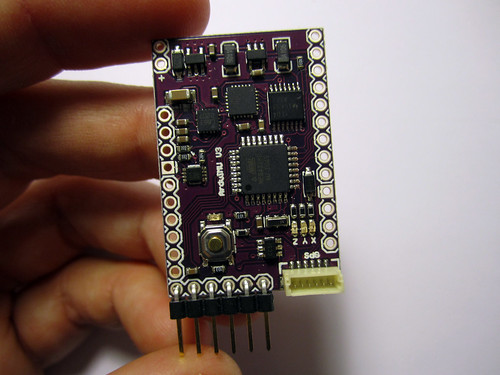
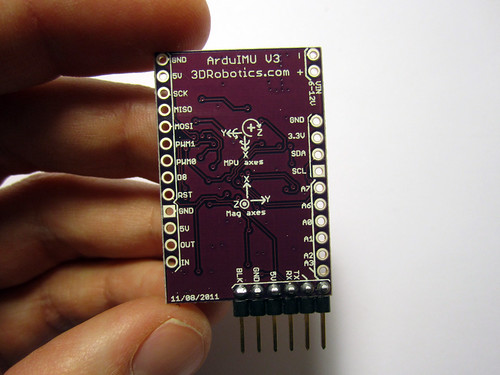
Use tweezers to insert wires through holes of PCB:
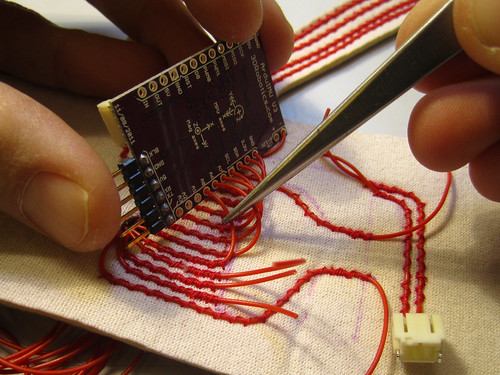
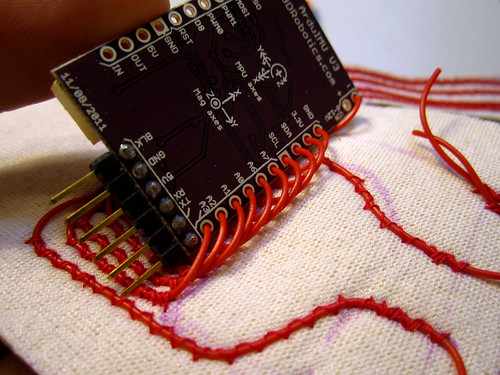
Trim the wires to about 6mm above the surface:
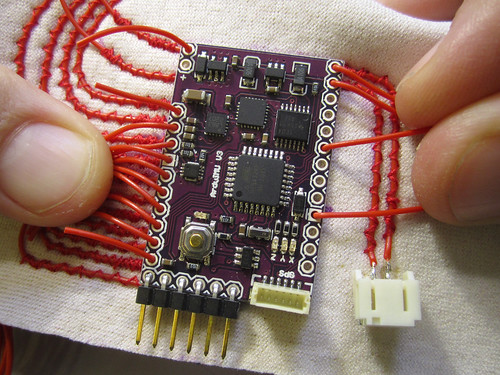
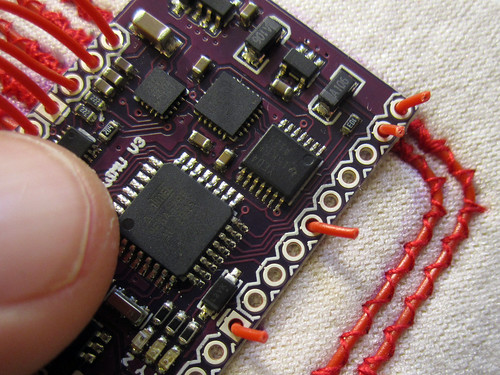
Use the cutter knife to nick the insulation without damaging the wire. Pull of insulation. This is a tricky part.
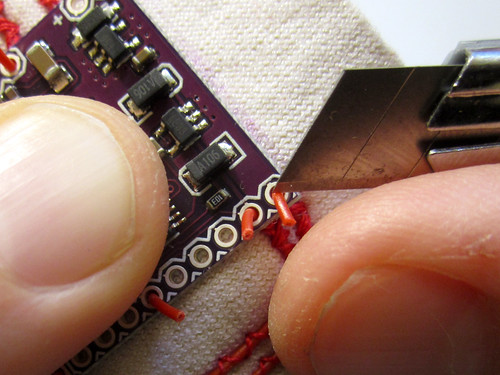

Use the tweezers to mash around the wire into a clump that does not go beyond the metal surface you want to solder it to. This is another tricky part!
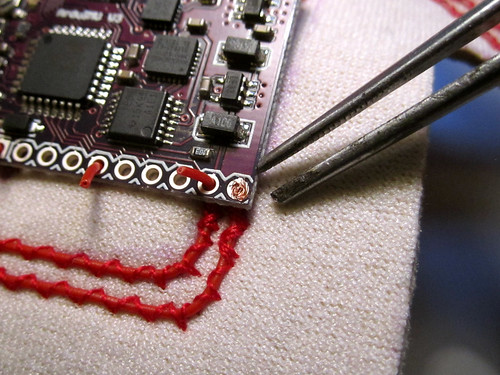
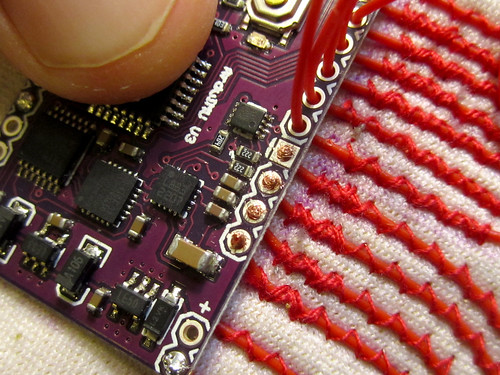
Now solder. With all the preparation done neatly, this should be simple.


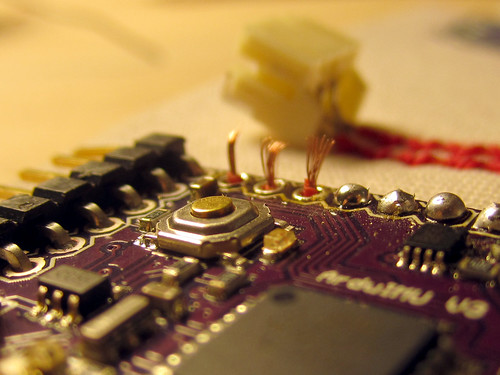


Twirling stripped wires for soldering to ArduIMU
Soldering twirled wires to ArduIMU
When you are done, take a close look at all your connections and make sure that everything is tidy like in the pictures bellow:


Because the ArduIMU circuit boards are not mirrored but our bodies and hands are, we need to account for this difference in the circuit layouts for the left and right hands. As most of the instructions in this DIY tutorial refer to the left hand glove. One main difference between the left and right hand circuits is that on the right hand circuit the wire connections from the analog inputs to the bend sensors will run underneath the ArduIMU circuit board as shown in the following photos:
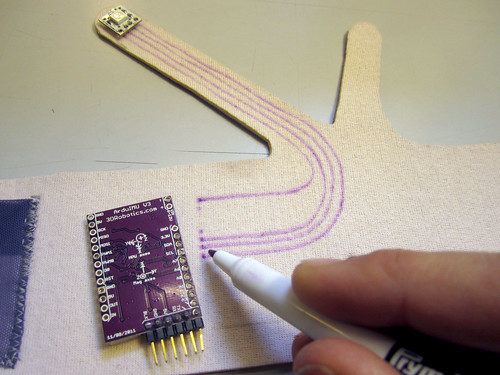
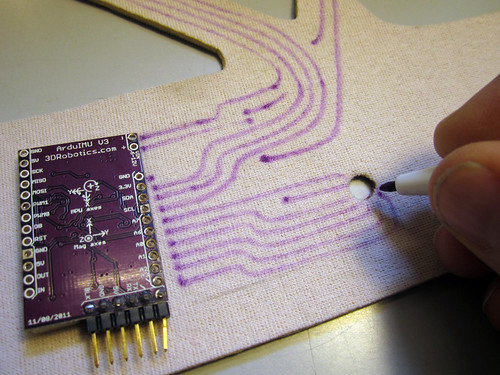
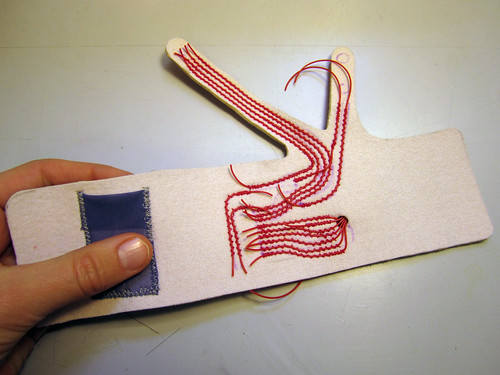
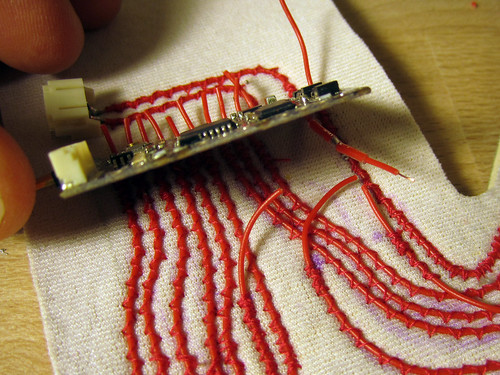
Soldering Pull-up Resistors
The ArduIMU has 6 analog inputs which we use for reading the values of the bend sensors. But only 4 of these analog inputs (A0, A1, A2, A3) have internal pull-up resistors (see: voltage dividers) built into the microcontroller which can be turned on in code. This means that for the remaining 2 analog inputs (A6, A7) we have to connect our own (external) pull-up resistors. Because the range of the Flexpoint bend sensors is about 20K-300K Ohm, we use 100K Ohm resistors that are connected between the analog input pins A6, A7 and VCC (up).
CAUTION! When placing the sensors make sure that their leads do not make contact with any other metal contacts of the components on the ArduIMU circuit!
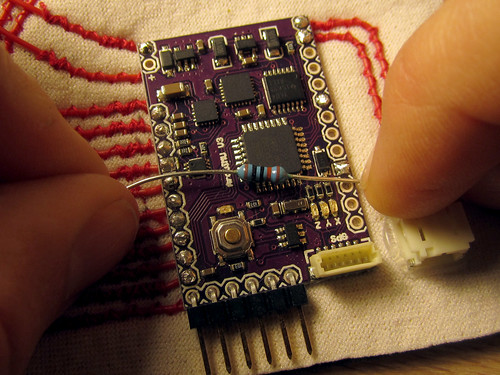
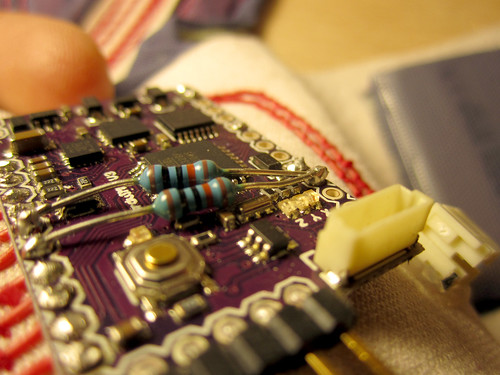
Left and right hand circuits with pull-up resistors going between analog pins A6, A7 and VCC.
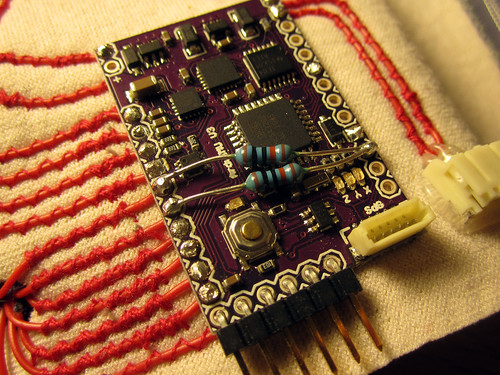
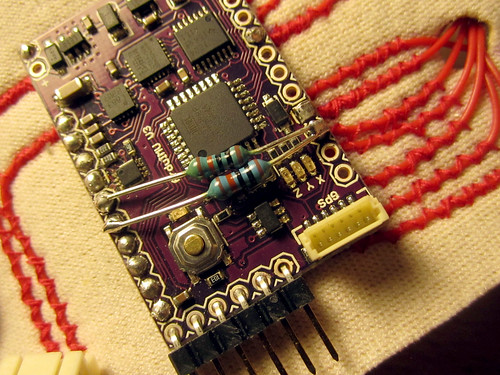
Soldering pull-up resistors
Hot-gluing JST Socket
Apply hot glue underneath the JST socket, make sure to get some on the actual solder connection and even on the wire insulation. Press down the socket to the neoprene. And make sure that the hot glue does not get inside the socket!
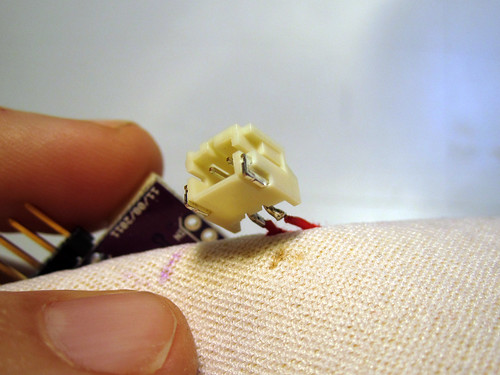
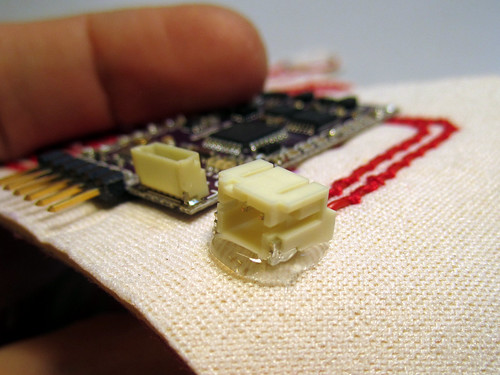

You can trim away excess hot flue after it has cooled with the wire clippers.
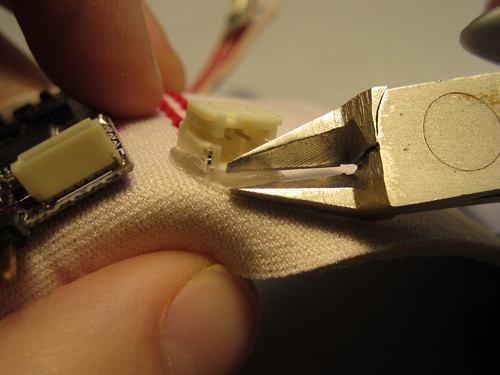
Test Your Circuit!
Using a multimeter set to measure continuity go over your circuit and make sure the following:
…
If all looks good with the multimeter, you can now plug-in the battery lead to the JST socket. The ArduIMU should come on. If it does not, then unplug it again quickly but carefully. Wiggle the plug back and forth while pulling at it gently. Unfortunately these connectors are not the best design.
